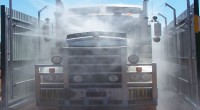The Important Choices to Make When Buying Aftermarket Exhaust Systems
It’s common knowledge that upgrading to an aftermarket exhaust system is one of the best ways to improve your engine’s performance. But with so many different types, how do you decide on the best one? Exhaust systems fall into three basic categories: cat back, axle back and header back. The difference between all of them is how much of the exhaust system they replace. That being said, every type improves performance in terms of unleashing more horsepower and improving fuel economy, but not on the same level.

For instance, cat back exhausts replace everything from the catalytic converter and back, axle back exhaust systems replace everything from the rear axle and back, and header back exhaust systems replace the entire system. Naturally, header back aftermarket exhaust systems provide the largest performance increase, as they replace the entire system. Cat back exhausts come second because, as I said, they replace everything from the catalytic converter and back. Axle back exhaust systems don’t deliver noticeable performance improvements, but they do improve the noise and looks of your vehicle.
Regardless of their type, aftermarket exhaust systems consist of components made of stainless or aluminised steel, whereas stock exhaust systems are typically made of mild steel to cut on cost. Stainless and aluminised steel are both corrosion and rust resistant and they perform better in tough riding environments simply because they’re stronger and more durable. There are two grades of stainless steel used to manufacture exhaust systems – T304 and T409. T409 is the more popular one as it’s more affordable, however, T304 is military grade and offers superior durability, rust and corrosion resistance properties.
Furthermore, aftermarket exhaust systems feature mandrel bends, whereas stock exhaust systems feature crush bends. Mandrel bends are manufactured using mandrel bending technology, which promotes exhaust scavenging and reduces power-robbing restriction, which ultimately leads to more horsepower. Mandrel bending technology utilises a flexible rod that’s inserted in the exhaust pipe, which prevents the pipe walls from kinking or collapsing.
Shopping for an aftermarket system is simple, as long as you know what you’re looking for. Aftermarket manufacturers make model-specific exhaust systems to ensure a proper fit. You’d seldom need to make any modifications to your vehicle to fit your new exhaust system. That being said, aftermarket exhaust systems are a worthy investment if you’re looking to improve vehicle performance, fuel economy and noise without breaking your bank.



